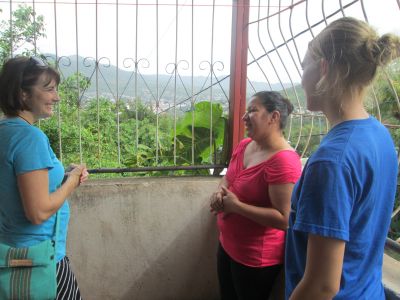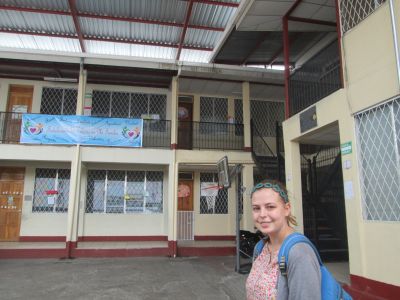A Day in the Life…Matagalpa
EMMA KOOP LIECHTY and SOPHIE SEARS are spending their 6 weeks of service in the beautiful mountain city of Matagalpa. Emma is serving in Colegio Bautista Matagalpa, a private primary school while Sophie is serving in small public school, La Amistad, that works with children who have special needs.
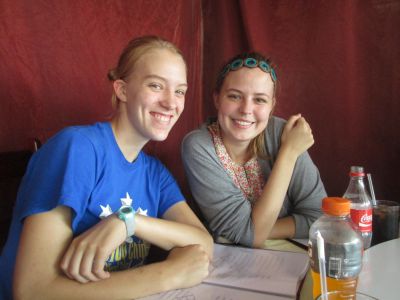
A JOURNAL EXCERPT BY EMMA KOOP LIECHTY:
“In a typical day here in Matagalpa I wake up around 6:30am. I shower and get ready for the day and eat breakfast with my sister and mom. Around 7:30am we head to work. Maria, my host sister, comes with us since she goes to school in the afternoon At work, I normally either get to work with the kids in the library or sometimes I spend the morning working on tasks to prepare for various school events, such as last week’s teacher’s day celebration. At the school, they know I am an art student so they give me all sorts of craft projects to do to prepare for events or to do with the kids.
After school, I normally go to my older host sister’s house for lunch with my mom. In the afternoons, I either do things to help my sister and husband with their church, go to the nutrition clinic to play with the kids there, run errands with my mom, or just relax at Karina’s house. I normally head home around 5pm and my sister, her husband and son, Fredy, come over to have dinner with me, my mom and younger sister.
In the evenings I play with Fredy, talk to my family, read or watch TV. I really enjoy playing with Fredy because he is full of energy and is always excited to see me. I normally go to bed around 10pm.”
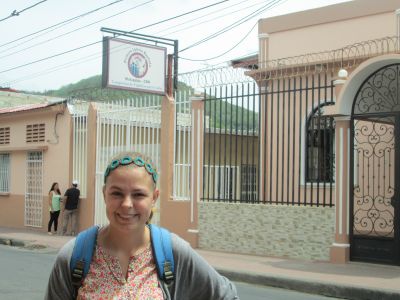
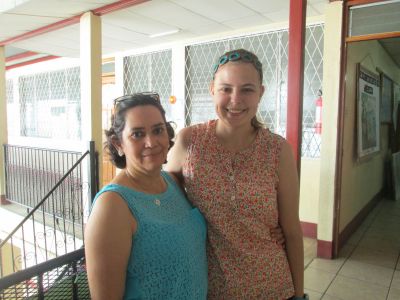
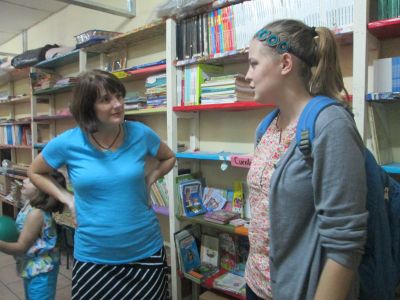
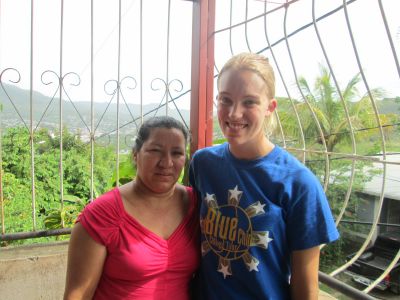
JOURNAL EXCERPTS BY SOPHIE SEARS:
“I’m enjoying my service assignment quite a bit. Typically I have to get up around 6am in the morning. We leave the house at 7am and go to an uncle’s house down the street. He has a truck in which he takes several kids along with me and my host mom to school. I ride in the bed of the truck with my sister. She told me it’s easier to stand up so I do. It’s a very exhilarating part of my day.
Once I get to work about 7:30am I greet the kids there and wait with the class for all of the others to arrive. We work for an hour or so (until 9am) on tracing letters, coloring, or other tasks the head teacher selects. I usually help with 1 or 2 of the 8 students. Normally they aren’t all there on the same day. At 9am we have a snack followed by free time until 10 or 10:30am. Then we do more structured group activities until about 11:30am. Then we get everyone’s backpacks packed and ready to get on the bus. At 12pm the students leave and I head to the office with my host mom and sister. My mom packs a lunch for me everyday so I eat that and then normally get on the Internet for a bit to see what’s going on back home. My host sister then leaves for her English class around 1:30pm. My host mom and I wait for her in the office until about 3 or 4pm. I can read or work on different things during this time. Then we go home on a bus, eat a small supper and normally go to bed pretty early after some TV. I like this daily routine fairly well.”
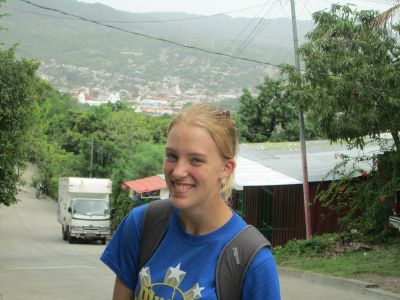
“Matagalpa is different from other parts of Nicaragua do to its vast number of mountains. Carazo and other areas we visited are much flatter. The mountains cause a wide range of effects regarding the natural world and ecological concerns. The altitude has a significant impact on the climate. It is much cooler in Matagalpa than in other areas. The mountains cause other problems when considering safety and agriculture. My host mom explained to me that they often have difficulty with dry soil even though there is plenty of rain. Often times the rain water runs down the mountain before it can absorb into the soil. The mountains also increase concerns for soil erosion. To combat this, the town is designed with built in walls and level areas to protect the mountain. In the school I’m working in they often caution kids about the dangers caused by the mountains. They are taught they live in an “at-risk” zone for many different kinds of natural disasters. They teach kids to be careful when it rains a lot because it could cause a mudslide down the mountain which is very dangerous.”
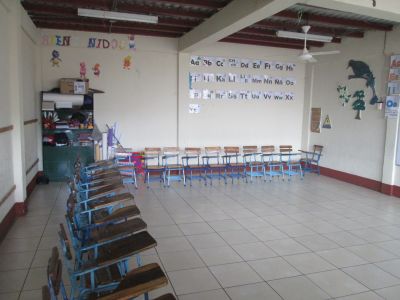
JOURNAL EXCERPT BY EMMA:
“The natural world surrounding me here in Matagalpa is absolutely beautiful. I love being in the mountains but still in a tropical climate. All of the trees are still luscious and flowering but it is significantly cooler here than in the south. My family lives higher up on the side of the mountain so they have some pretty spectacular views overlooking the city and the surrounding mountains.
Last week my host sister, brother-in-law, some co-workers and Sophie and I hiked up to the cross on top of the hill overlooking the city. There weren’t many houses or people living along the hike, so we were mostly in the wilderness of the mountains with the occasional coffee farm. I was really struck on that hike how beautiful my surroundings were, but also how different the climate was at the top of the hill from lower in the valley. It was considerably cooler up there and the types of trees growing were different.
Despite the rain we get nearly daily, the city still struggles with having tap water. My family has gone without water a few times since I’ve arrived here. I have also noticed that a few of the surrounding hills seem pretty deforested as the natural landscape here is full of trees.”
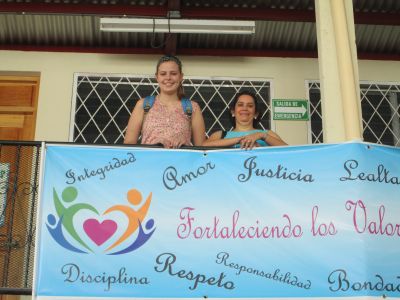
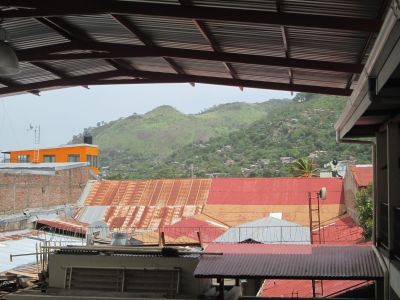
JOURNAL EXCERPT BY SOPHIE:
“Even after all the time I’ve spent in Nicaragua, I’m still struck by the differences in diet and just the different types of food available in general. It seems like every time I think I’ve got the hang of the cuisine here I’m introduced to another fruit I’ve never seen before or a different dish common to Nicaragua. I’ve had many chances to try new things with my host family in Matagalpa. My host mom really enjoys teaching me about Nicaraguan food and what is a customary diet here. Besides the typical meal of gallo pinto, she had me try sopa de mandango (cow stomach soup), different types of enchiladas, and many different types of fruits and juices.”
